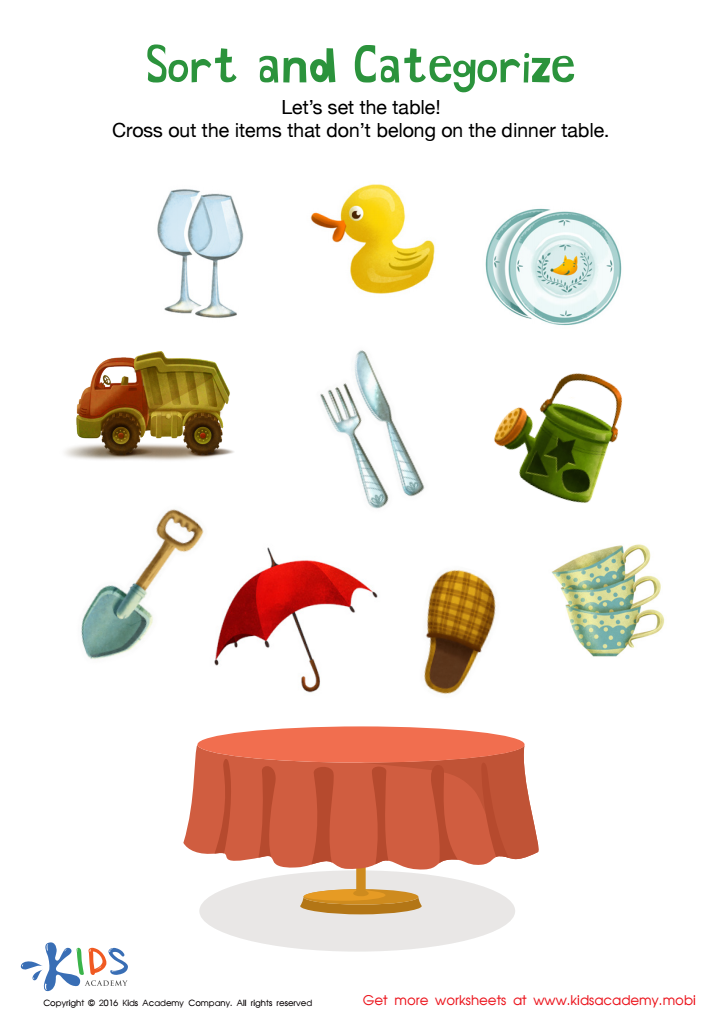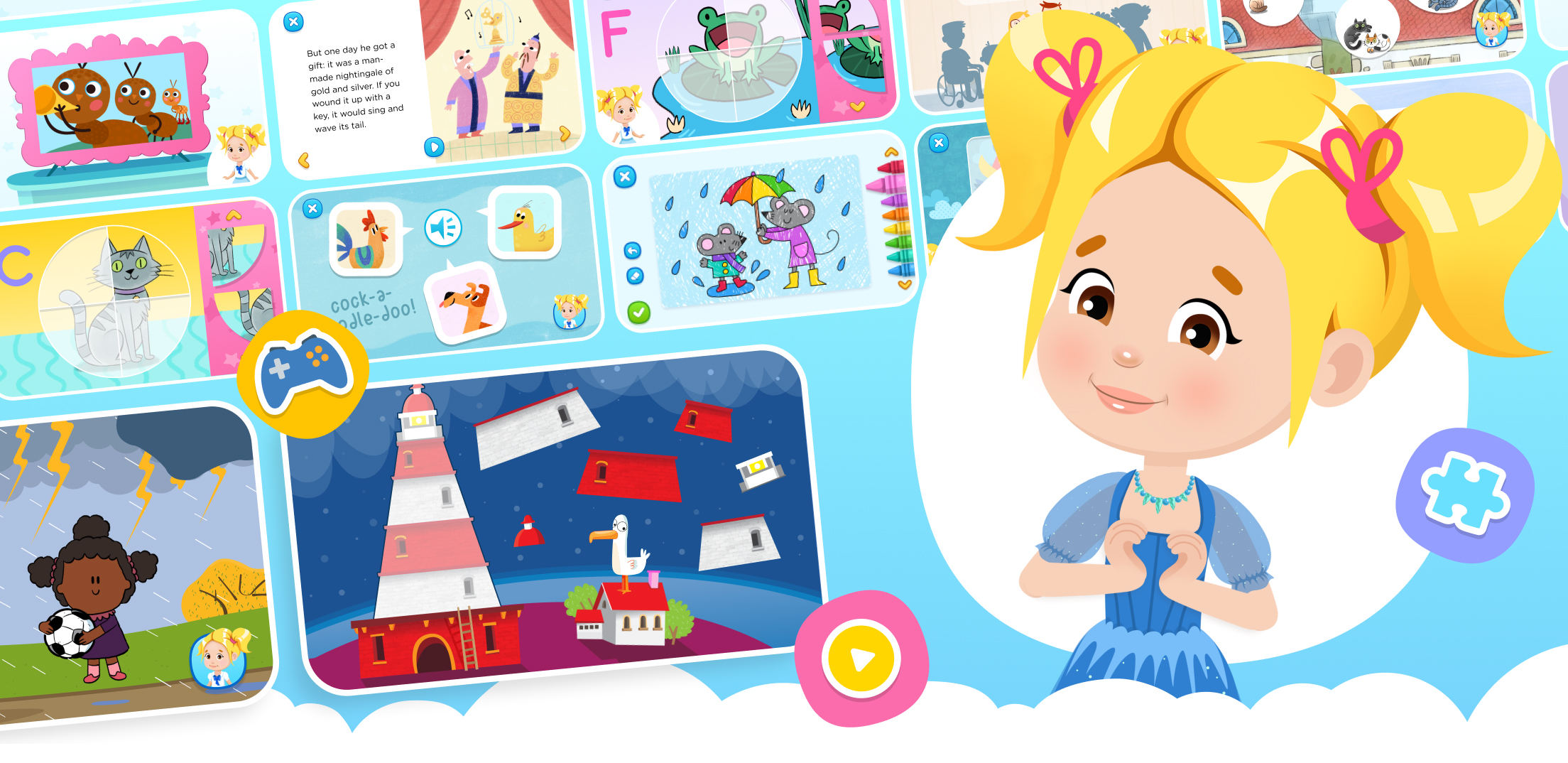Categorization skills Sorting Worksheets for Ages 3-9
5 filtered results
-
From - To
Enhance your child's critical thinking and organization skills with our Categorization Skills Sorting Worksheets, tailored for ages 3-9. These engaging worksheets instill foundational cognitive abilities by encouraging children to sort and classify items based on various attributes like shape, size, color, and more. Perfect for improving math skills and logical reasoning, these activities are designed to be both educational and fun. Empower your young learner to develop essential problem-solving and analytical skills through hands-on practice. Visit our page to explore a wide range of sorting worksheets and give your child a head start in their academic journey.
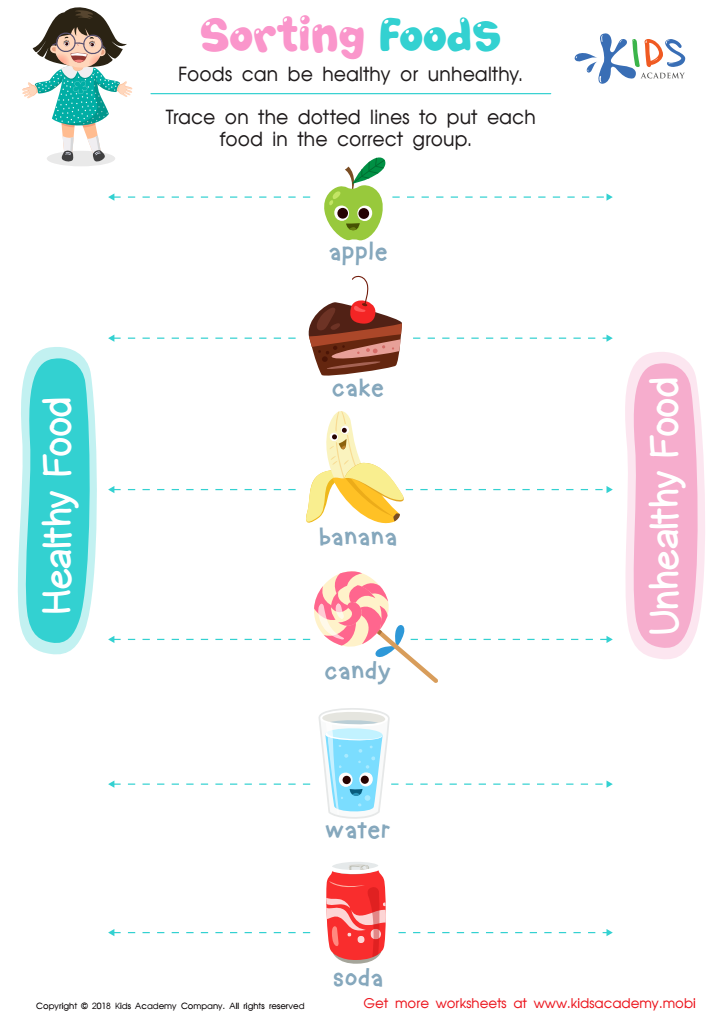

Sorting Food Worksheet
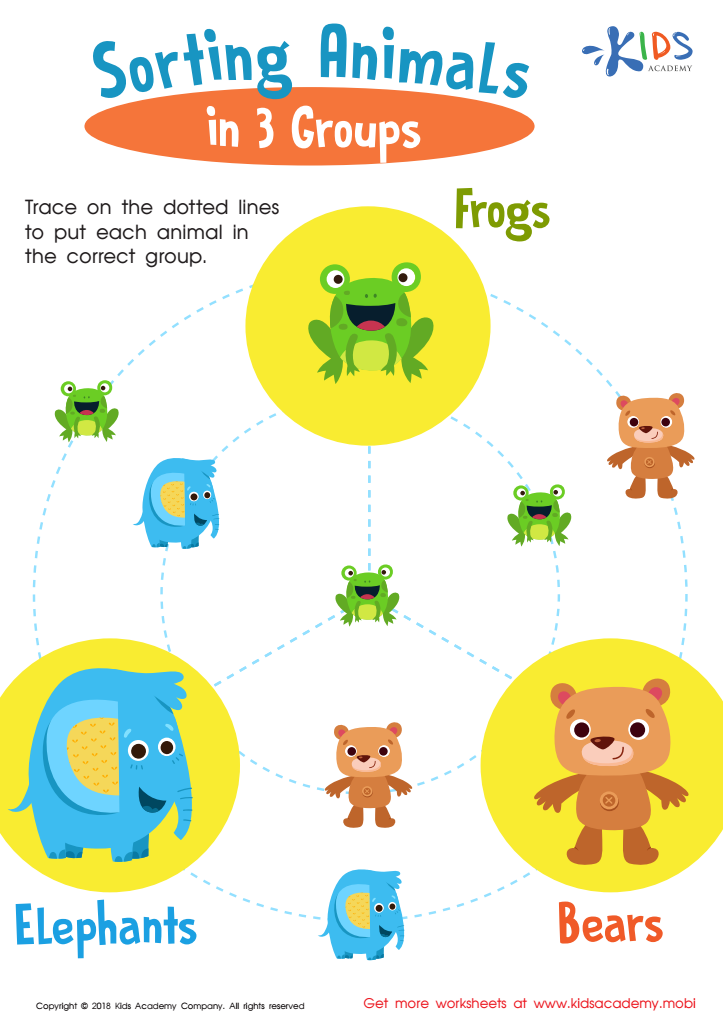

Sorting Animals in 3 Groups Worksheet
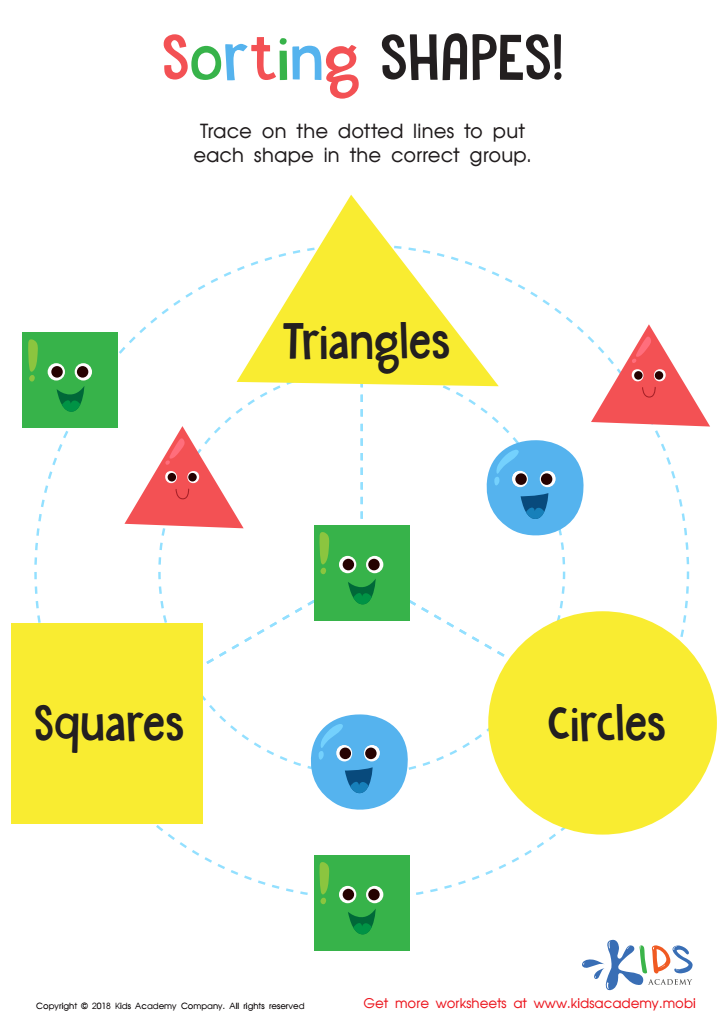

Sorting Shapes - Part 3 Worksheet
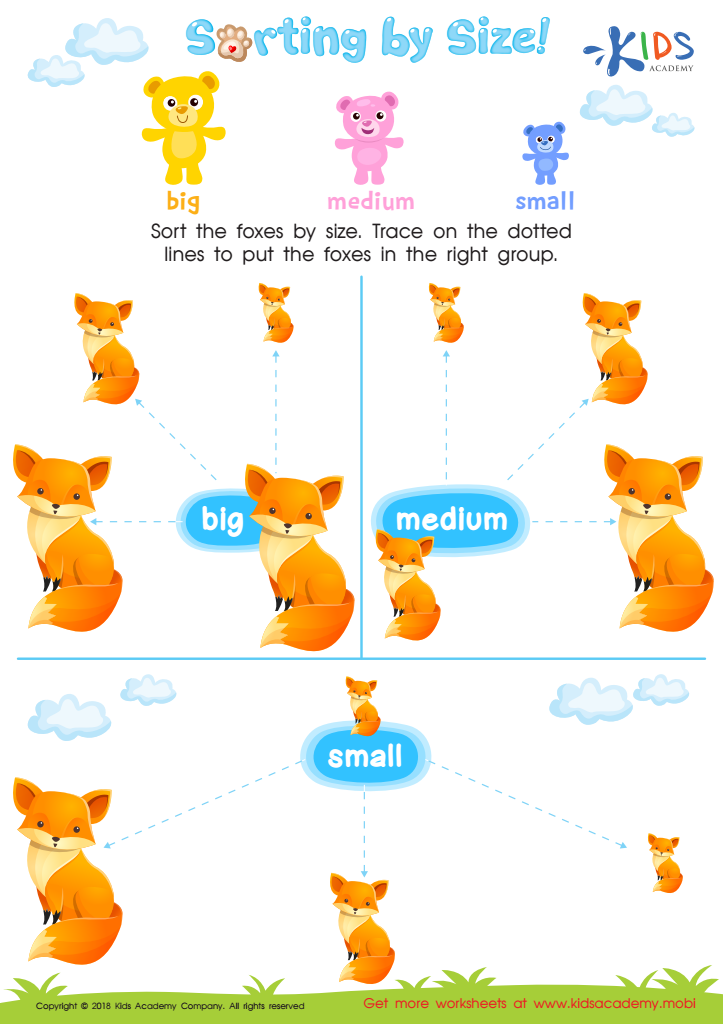

Sorting by Size Worksheet
Categorization skills and sorting activities are fundamental for young children's cognitive development and should be prioritized by parents and teachers for those aged 3-9. These skills form the building blocks for higher-order thinking by helping children understand how things are alike and different, fostering basic organizational skills. By engaging in categorization, children enhance their critical thinking and problem-solving abilities, which are crucial for academic success.
Moreover, categorization promotes language development. As children learn to group items and describe the categories, they expand their vocabulary and improve their ability to communicate effectively. Sorting tasks involving numbers, colors, shapes, and objects can also advance mathematical understanding and early literacy.
Social skills are another area that sees improvement. Engaging in group sorting activities teaches children cooperation and sharing, all essential for effective interpersonal interactions. Additionally, these activities boost attention to detail and concentration, essential for both classroom learning and everyday functioning.
The benefits are multi-faceted—spanning cognitive, linguistic, social, and emotional realms. For these reasons, parents and teachers should integrate categorization skills and sorting activities into daily routines and play, ensuring holistic development and laying a solid foundation for future learning.
 Assign to My Students
Assign to My Students

